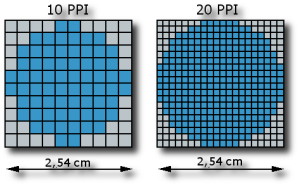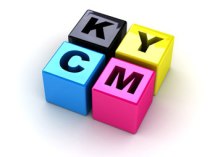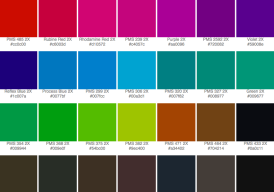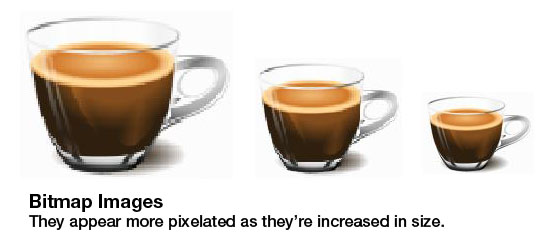So you have got designed your flyer or pamphlet, found an esteemed
printer and currently you’re prepared for printing. However the big
question is currently what paper stock (paper material) to choose?
Should you use a gloss or silk paper or however regarding an uncoated
sheet? These area unit necessary inquiries to ask, the right choice of
paper will enhance your design and image; the wrong choice could spoil
the print job and leave you disappointed. Which one is right to use? But
what are all these different papers?
There are basically two main categories of paper used today for printing, coated and uncoated paper.
Coated Paper or board
This paper incorporates a coating applied to either one or both sides of the sheet. it’s typically mentioned as art paper. The coating may be a mixture of china clay, latex and alternative compounds that once applied improve the smoothness of the paper surface giving top quality printing. Coated paper is the natural selection for full color prime quality print work like flyers, brochures or posters. The coating allows for sharp pictures, spirited color and improved ink drying.
Silk coating (Silk Art or Silk) encompasses a smooth end with a small shine. This finish permits for excellent print results without the shine you’d get from a gloss stock. it’s good for company brochures, flyers and posters wherever the dearth of “glossiness” makes print straightforward to read.
Matt finish (Matt Art) is additionally a smooth sheet however with a dull finish. it’s rarely used nowadays, however would be a decent alternative if there are giant areas of text. Some individuals like the unostentatious finish of Matt art as a part of their image.
Coated paper is available during a range of different finishes the main ones being silk, matt and gloss.
Gloss finish (Gloss Art or Gloss) encompasses a shiny coating. This coating permits for fast ink drying and allows for the foremost spirited of colors. Gloss is extensively used for flyers, booklets and posters among others.
Uncoated Paper (offset)
Uncoated paper has no coating applied to the paper. though there are a range of various qualities of finish, uncoated paper still has pits within the surface of the paper. the lack of coating doesn’t provide for the most effective results in full color printing. Drying times also increase once using uncoated paper. this kind of material is best suited to company stationery like letterheads or for newsletters.
Paper weights
Paper is measured, in the UK, as grams per square meter or GSM. The upper the GSM the thicker and bulkier the paper, although paper thickness and bulk will vary greatly between completely different paper brands of identical GSM. Typically silk art is bulkier (or thicker) than a glossy paper of identical weight. Paper weights vary from 70gsm up to 400gsm for the majority of print jobs. Heavier board is offered however not sometimes used for general print jobs.
Generally letterheads are written on either a 100gsm or a 120gsm Uncoated paper, leaflets on a 130gsm or 150gsm, flyers on a 300gsm or 350gsm.
In the A series size of papers, A0 size is one area unit, therefore associate A4 sheet of paper can weigh one sixteenth of the quoted gsm e.g. one A4 stationery written on 100gsm can weigh vi grams.
A good plan before inserting any print work is to raise your printer to send samples of the paper stock they use. evoke a spread of accessible weights and endes and if attainable evoke written samples on the fabric to grant you a decent plan on the finish.
There are basically two main categories of paper used today for printing, coated and uncoated paper.
Coated Paper or board
This paper incorporates a coating applied to either one or both sides of the sheet. it’s typically mentioned as art paper. The coating may be a mixture of china clay, latex and alternative compounds that once applied improve the smoothness of the paper surface giving top quality printing. Coated paper is the natural selection for full color prime quality print work like flyers, brochures or posters. The coating allows for sharp pictures, spirited color and improved ink drying.
Silk coating (Silk Art or Silk) encompasses a smooth end with a small shine. This finish permits for excellent print results without the shine you’d get from a gloss stock. it’s good for company brochures, flyers and posters wherever the dearth of “glossiness” makes print straightforward to read.
Matt finish (Matt Art) is additionally a smooth sheet however with a dull finish. it’s rarely used nowadays, however would be a decent alternative if there are giant areas of text. Some individuals like the unostentatious finish of Matt art as a part of their image.
Coated paper is available during a range of different finishes the main ones being silk, matt and gloss.
Gloss finish (Gloss Art or Gloss) encompasses a shiny coating. This coating permits for fast ink drying and allows for the foremost spirited of colors. Gloss is extensively used for flyers, booklets and posters among others.
Uncoated Paper (offset)
Uncoated paper has no coating applied to the paper. though there are a range of various qualities of finish, uncoated paper still has pits within the surface of the paper. the lack of coating doesn’t provide for the most effective results in full color printing. Drying times also increase once using uncoated paper. this kind of material is best suited to company stationery like letterheads or for newsletters.
Paper weights
Paper is measured, in the UK, as grams per square meter or GSM. The upper the GSM the thicker and bulkier the paper, although paper thickness and bulk will vary greatly between completely different paper brands of identical GSM. Typically silk art is bulkier (or thicker) than a glossy paper of identical weight. Paper weights vary from 70gsm up to 400gsm for the majority of print jobs. Heavier board is offered however not sometimes used for general print jobs.
Generally letterheads are written on either a 100gsm or a 120gsm Uncoated paper, leaflets on a 130gsm or 150gsm, flyers on a 300gsm or 350gsm.
In the A series size of papers, A0 size is one area unit, therefore associate A4 sheet of paper can weigh one sixteenth of the quoted gsm e.g. one A4 stationery written on 100gsm can weigh vi grams.
A good plan before inserting any print work is to raise your printer to send samples of the paper stock they use. evoke a spread of accessible weights and endes and if attainable evoke written samples on the fabric to grant you a decent plan on the finish.




